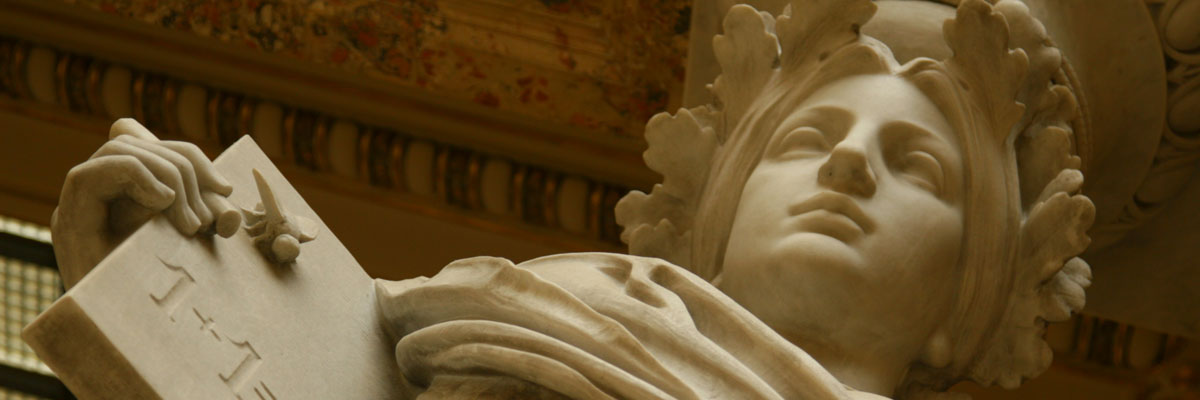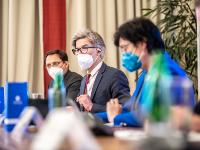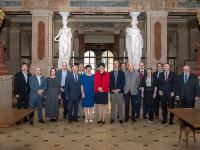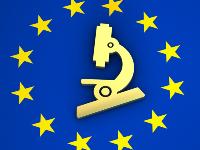
News archive
Search
Selected range: all newsWhen preparing policy in certain areas, the European Commission listens to the views of seven Chief Scientific Advisors. Eva Zažímalová, the President of the Czech Academy of Sciences has been appointed a member of this expert panel. Which is a great personal and professional honour. In her role as a Scientific Advisor she will be helping EU policy makers by providing her expertise, e. g. in epidemiology and social behaviour.
French Research Center in Humanities and Social Sciences (CEFRES) was established thirty years ago in 1991 when Central and Eastern European countries were just recovering from the decades of research isolation they had experienced locked behind the Iron Curtain. CEFRES aimed to restore the ties that had been broken between France and Central Europe in the area of science. This goal has been achieved, and currently CEFRES goes even beyond it. CEFRES organises workshops and conferences on historical, political science or philosophical topics in Prague and, since 2015, has been developing ambitious scientific programmes that could result in an application for a prestigious grant from the European Research Council (ERC).
Delegates of the Academy Assembly have elected new members to the CAS’s Academic Council and Science Council for 2021–2025. The elections took place through a specially designed electronic application.
Operation of the L3-HAPLS laser system in ELI Beamlines Research Centre at 0.5 PW level was demonstrated, consisting in compression of the full energy output pulses currently generated by the laser chain, in the Petawatt vacuum compressor.
The Czech Academy of Sciences, the largest research performing organization in the Czech Republic’s research, development and innovation system, welcomes that the political agreement on the EU 2021-2027 Multiannual Financial Framework has been reached, making it possible to commence the next Framework Programme for Research and Innovation Horizon Europe from January 2021 as planned.
Methanol is a colorless liquid with a distinctive alcoholic odor. The scientists from the J. Heyrovský Institute of Physical Chemistry of the CAS have now created and described a new way to produce it cheaply. For their discovery, they received the Czech Intellect award in the Invention category. If methanol can be produced economically, it could partially replace existing engine fuels.
ATTENTION
Due to the current hygienic and epidemic situation pertaining to the occurrence of the new type of coronavirus and due to active medical prevention, with consent of the administration of the CAS,
the building of the Academy of Sciences at Národní 1009/3 is closed both for professional and general public,
including the premises of the Science and Art gallery and Gastronomic Services Národní, with effect from 22 October 2020 until further notice.
At the same time, all events for public, lectures, and conferences are cancelled.
Attendees of business meetings and work courses shall report at the reception where they will be informed about the rules regarding the entry into the building.
Ing. Tomáš Wencel, MBA
director of the Centre of Administration and Operations of the CAS
Nuclear genome size, corresponding to the total length of DNA molecules in cell nuclei, varies more than 2,000-fold between different plant species. The genome size is not proportional to the number of genes, complexity, or size of the plant species. For example, the genome of the oak tree is surprisingly 65-fold smaller than the genome of some herbs like Paris quadrifolia (Figure). This herb carries 58.8 billion DNA base pairs in its nuclei, making its giant genome 20-fold larger than that of humans.
The Czech Academy of Sciences, the largest research-performing institution in the Czech Republic, highly appreciates the intention of the European Commission to redesign and invigorate the European Research Area. Hereby, we would like to contribute to the ongoing debate on the future of research and innovation in the EU. Our position can be summarized into five crucial points that ought to be considered when conceptualizing the future shape of the ERA.
What does it mean to be a metal and how is a metal formed? These seem like textbook questions with a simple answer: Metal is characterized by free electrons which give rise to its high electric conductivity. But how exactly is a metallic conduction band formed from originally localized electrons and what is the corresponding microscopic picture for the material involved? In collaboration involving scientists from the Czech Republic, USA, and Germany, the research team of Pavel Jungwirth from the Institute of Organic Chemistry and Biochemistry of the Czech Academy of Sciences (IOCB Prague) has succeeded in mapping at the molecular level the electrolyte-to-metal transition in alkali metal – liquid ammonia solutions using a combination of photoelectron spectroscopy (PES) and electronic structure calculations. The results of their research were recently published as a Research Article in Science, one of the most prestigious scientific journals in the world, which also selected the study for cover image.









